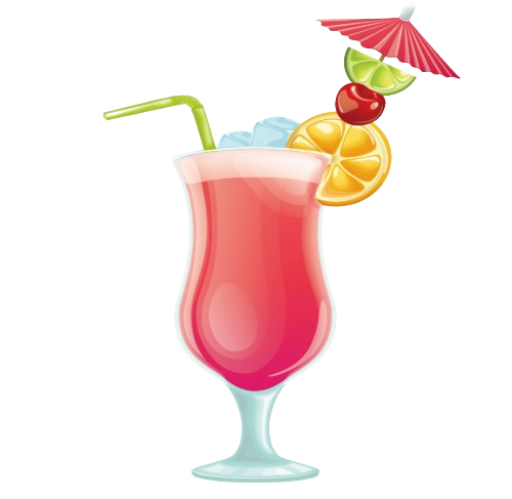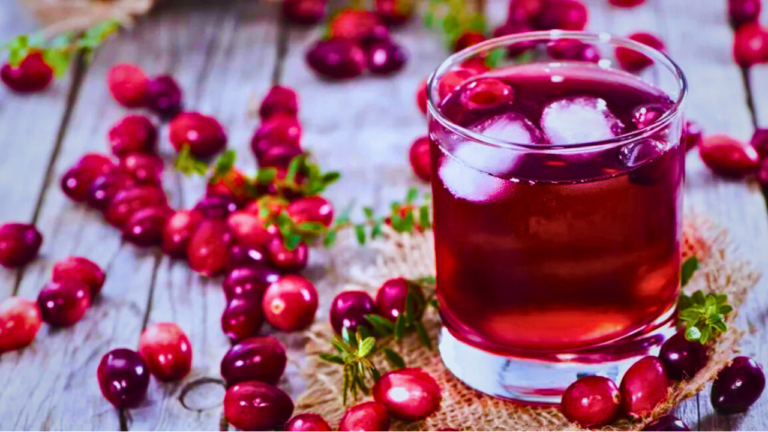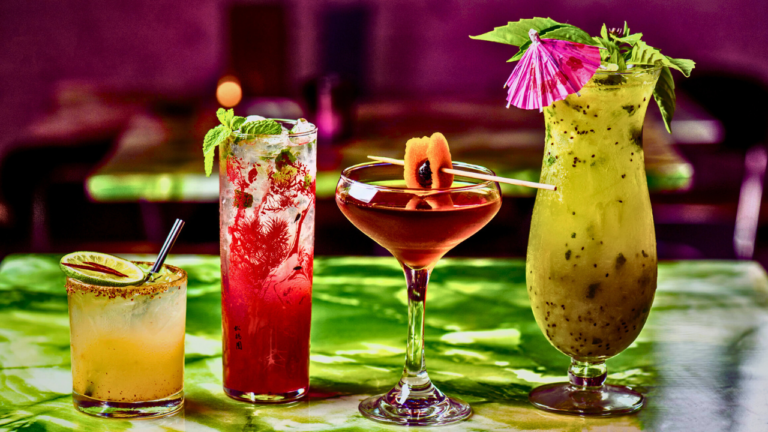How Do You Add Dry Ice To A Cocktail?
The meticulous art of cocktail making has seen a vast array of methods and implements to enhance the presentation, taste, and overall delight of the consuming experience. Among the growing collection of cocktail additions, dry ice has emerged as a fascinating and theatrical element, transforming ordinary mixes into frothing and smoky spectacles.
Commonly used in Halloween or theme-based parties, dry ice exhibits a captivating phenomenon known as sublimation—the process of solids transforming directly into gas without passing through the liquid phase. This quality of dry ice propels it as a fan favorite, breathing life into a cocktail with a visual drama of low-lying fog.
“A great mixologist knows that a cocktail is more than a drink. It’s a performance.”
While the drama induced by dry ice is alluring, it is essential to acknowledge the skill, knowledge, and precision involved in manipulating this potentially dangerous substance. As exciting as this technique may be, the inherent risks associated with dry ice call for professionalism and caution.
- Understanding the Properties of Dry Ice: Dry ice is not like standard ice cubes. Made from frozen carbon dioxide, dry ice is much colder, sitting at a temperature of negative 78.5 degrees Celsius (or negative 109.3 degrees Fahrenheit).
- Safe Handling: Dry ice should never be touched directly or ingested due to its extremely cold temperature. Use safety equipment, like tongs and insulated gloves, when handling dry ice.
- Adding Dry Ice to Cocktails: Knowing when and how much dry ice to add to a cocktail requires both skill and understanding of its sublimation rate and how it affects the drink.
To novices and the unacquainted, adding dry ice to a cocktail might seem like an intimidating prospect, but with the right information and guidance, it can add an illustrious element to your bartending repertoire.
So, whether you aspire to dazzle your guests at the next event or endeavor to immerse yourself in the details of mixology, this comprehensive guide will navigate you through the critical aspects of handling, adding, and safely consuming cocktails with dry ice. Let’s commence this fascinating journey of blending science with the art of cocktail making.
Read also: Which Juice Is Best For Cocktails?
What are the safety measures to consider when handling dry ice?
While utilizing dry ice can elevate the allure of cocktails to an awe-inspiring new level, it is critical to observe safety measures when handling this impressive substance. Incorrect handling can lead to severe burns, associated with the extremely low temperature of dry ice, which stands at a staggering -78.5°C or -109.3°F.
Dry ice is essentially solid carbon dioxide. It does not melt into a liquid when heated but directly turns into gas, a process known as sublimation. Given the nature of its state and its extreme coldness, proper handling requires some knowledge and precautions.
- Always use tongs or gloves. For our safety, one must never directly touch dry ice with bare hands. Use insulated gloves or commercial-grade tongs to handle these cubes.
- Store in an Insulated Container: To prevent rapid sublimation, always store dry ice in an insulated, well-ventilated container. A lack of ventilation can cause the container to burst or explode under pressure from the buildup of carbon dioxide gas.
- Eye protection: Given the potential for tiny pieces of dry ice to move unexpectedly, it is best to use safety goggles when handling dry ice.
- Ventilation: Ideally, prepare your cocktails in a well-ventilated space. Sublimation produces carbon dioxide gas, and in a confined area, this can potentially result in lowered oxygen levels.
The fascination and appeal of using dry ice in cocktails lie not just in the sensory experience it imparts but also in the measured precision and care that its usage demands. We might think of these safety rules not as restrictions but as guiding principles that enable us to enhance our mixing skills and create visually stunning cocktails.
Remember, the art and science of cocktail creation are as much about understanding and mastering these nuances as they are about the ingredients, techniques, and presentations themselves. The use of dry ice elevates cocktail creation to an entertaining spectacle, combining the enjoyment of a delectable drink with the thrill of a unique presentation.
What are the steps to add dry ice to a cocktail?
To introduce an element of spectacle to a cocktail, adding dry ice is one noteworthy approach that captures attention and leaves an indelible impression. However, it’s absolutely imperative to exercise the utmost caution in the process. Let’s delve into the procedural outline of how to make your cocktail fascinatingly effervescent.
Before beginning, ensure that you have a pair of insulated gloves and goggles handy. Dealing with dry ice can be a potentially hazardous endeavor without taking the correct precautions, as it has a dauntingly low temperature of -78.5 degrees Celsius. Eyewear protects against any sudden splatter, and gloves guard against immediate skin contact.
- Preparation of the Equipment: To safely handle dry ice, equip yourself with a pair of insulated gloves and safety goggles. Using a hammer, gently break the dry ice into smaller chunks in a well-ventilated area away from direct sunlight or heat sources.
- Size of Dry Ice: Ideally, a piece of dry ice for a cocktail should be small—around the size of a sugar cube—not larger. This decreases the chance of accidental ingestion or direct contact with the skin or eyes.
- Mixing the Cocktail: After all the other ingredients are mixed, the dry ice should be the last element added. It is important not to exceed the quantity of a sugar-cube-sized piece per drink to prevent excessive bubbling.
- Serving the Cocktail: Serve the cocktail immediately after adding the dry ice for the best visual effect. However, stress to the consumer not to ingest the dry ice cube, as that could result in injury. Ideally, the dry ice should fully sublimate—transition from a solid to a gas—before the cocktail is consumed.
Note: The spectacle of dry ice sublimation, causing the signature smoky effect, is indeed mesmerizing. But the achievement of this theatrical presentation must never compromise safety. The power to captivate an audience with a cocktail presentation is, after all, a testament to the skill and creativity of its creator, as well as the imbiber’s enjoyment. It is this harmonic synergy of danger and spectacle that separates ordinary cocktails from the sublime.
Read also: What Is The Formula For Cocktail Mix?
How does dry ice affect the taste and presentation of a cocktail?

When we delve into the realm of cocktail creation, it’s interesting to note that the addition of dry ice does more than just keep a drink cold. It markedly alters both the presentation and taste of the cocktail, presenting us with unique opportunities to enhance the beverages we concoct.
From a visual perspective, dry ice creates a theatrical, smoky effect that is truly awe-inspiring. This is due to the process of sublimation, wherein the dry ice transforms directly from a solid to a gas. The result is a stunning cloud of vapor enveloping the drink, adding a sense of mystery and spectacle to our ordinary cocktail experience.
Remember the saying, We eat with our eyes first? Well, it appears to be true for drinking as well. According to research, a visually appealing cocktail can prime our taste buds for a better overall experience. It’s a trick that’s been exploited by skilled bartenders and mixologists around the world, using an intricately carved piece of fruit or even a well-placed umbrella. With the addition of dry ice, we’ve catapulted this visual spectacle to a new level.
But what about the taste? Dry ice is made from carbon dioxide and doesn’t have a taste of its own. However, it alters the cocktail’s temperature profoundly, and this has a significant effect on the perceived taste of the cocktail elements. On the molecular level, as a cocktail cools, certain tastants are less readily released, creating a smoother and less intense flavor profile. Hence, cocktails served with dry ice tend to have smoother, more rounded flavors.
The desired effect of the cocktail, be it sharp, refreshing, smooth, or intense, will determine whether the use of dry ice is beneficial or disadvantageous from a flavor perspective.
Whether you’re entertaining guests or indulging in a private cocktail tasting, the hypnotic dance of dry ice vapor swirling around your drink is an experience that shouldn’t be missed. Just remember to let the mist subside before you take that first sip, lest we risk physical harm from the still-freezing dry ice pieces. It’s not just about using dry ice; it’s about using it wisely. After all, we want to elicit gasps of admiration from our audience, not gasps of pain.
In conclusion, dry ice’s dramatic visuals and its effect on flavor can elevate a cocktail from ordinary to extraordinary. It implies that we are not just drinking a cocktail; we’re experiencing it.
What are the potential risks of consuming dry ice in a cocktail?
Adding a dash of drama to your cocktail with the use of dry ice can certainly elevate the experience. However, an understanding of the associated risks is of paramount importance prior to its use. Safety, after all, must not be compromised for the sake of aesthetics.
Dry ice, which is simply frozen carbon dioxide, is an enticing addition to cocktails due to its smoke-pouring effect and its ability to rapidly chill beverages. While it beautifies and cools your drink, it poses potential risks if improperly handled or consumed. Dry ice is -78.5 degrees Celsius (-109.3°F), a temperature that is shockingly cold and dangerous to the human body.
- Physical Harm: Instantaneous contact with dry ice can cause frostbite or burns akin to heat burns. Consuming a cocktail with dry ice can cause severe damage to the skin and internal organs if the ice hasn’t fully sublimated.
- Gas Expansion: As dry ice transforms from solid to gas, it expands. If swallowed, the gas may build up in the body and cause discomfort, pain, or more severe conditions such as a ruptured esophagus or stomach.
- Asphyxiation: Although the gas produced by dry ice is non-toxic, in enclosed spaces or in large amounts, it can displace oxygen, leading to asphyxiation.
While these risks might seem alarming, it’s important to note that they are typically the result of improper usage. When used correctly, dry ice can safely produce an extraordinary embellishment to your cocktails. That said, it is always advisable to let the dry ice fully sublimate before drinking the cocktail to avoid physical harm. As we say, safety first, extravagance second.
What types of cocktails are best suited for the addition of dry ice?

When contemplating the proper introduction of dry ice to a cocktail, selecting the appropriate cocktail for this unique embellishment is a task deserving meticulous attention. Indeed, not all cocktails are compatible with the aesthetic enhancement and chilling effect provided by dry ice.
As cocktail enthusiasts, we can all confess that the midas touch of dry ice truly shines within the realm of opaque, mystical beverages, where the vaporous effect will carry the most visual impact. These can be dark, fruit-packed mixtures or milky concoctions with an enigmatic allure.
Important to note, cocktails that rely heavily on the distinct aroma of their ingredients may not benefit from the addition of dry ice because the cold emitted can potentially subdue these subtle olfactory notes.
Certain cocktails, however, stand out amidst the crowd when it comes to their ideal compatibility with dry ice. Let’s take a glimpse at these selected few:
| Cocktail Name | Description |
|---|---|
| White Russian | With its creamy, heavy constitution, the broad appearance of misty wafts from the dry ice adds a shroud of mystery to this classic beverage. |
| Blackberry Bramble | The dark fruit elements in this cocktail make it a perfect backdrop for the cloud-like formation from dry ice. The bramble, with its blackberry liqueur and gin base, lends itself well for a Halloween-appropriate, spooky cocktail. |
| Blue Curacao Margarita | This vibrant azure cocktail benefits enormously from the foggy aura created by dry ice . The ethereal blue haze adds drama and intrigue to what is already an attractive cocktail. |
Above all, the nature of your event, personal preference, and the types of cocktail options available will influence the best choice when incorporating dry ice. Responsible experimentation and creativity can lead to truly spectacular results when melding dry ice with cocktail craft.
Conclusion
In conclusion, the application of dry ice in cocktails offers a unique perspective in the arena of mixology. The aesthetic appeal it bestows upon a well-crafted cocktail is undeniably alluring, transforming an ordinary liquid refreshment into an intriguing piece of performance art that commands and rewards the spectator’s attention.
However, the process of adding dry ice to a cocktail is not without its challenges and precautions. Dry ice, or solidified carbon dioxide, has a sub-zero temperature that can pose significant risks if not handled carefully.
Furthermore, its consumption should be strictly avoided until it has fully sublimated to prevent potential digestive tract injuries. It is always incumbent upon us to prioritize the safety and wellbeing of both ourselves and our guests.
Read also: Do Jack Daniels Country Cocktails Expire?
FAQs
How long does dry ice last in a cocktail?
Dry ice typically sublimates completely in about 5 to 10 minutes, depending on the size of the ice and the temperature of the drink.
Can I make dry ice at home for my cocktails?
Creating dry ice requires specialized equipment and an understanding of the safety precautions associated with handling carbon dioxide in its solid state. Thus, home production is generally not recommended.
Is it safe to touch dry ice with your bare hands?
It is not safe to touch dry ice directly with bare skin, as it can cause frostbite. Always use tongs or insulated gloves when handling dry ice.
What happens if one swallows dry ice?
If swallowed, dry ice can cause severe internal damage due to its extremely cold temperature. It is therefore crucial to ensure it has completely sublimated before consuming the drink.
Can using dry ice to chill a cocktail dilute it?
Due to its ability to sublimate directly from a solid to a gaseous state, dry ice does not dilute the cocktail as traditional ice cubes would.
Does using dry ice have any impact on the cocktail’s flavor?
The use of dry ice primarily enhances a cocktail’s visual appeal and has a negligible impact on the drink’s flavor.
Are there any types of drinks or cocktails that should not have dry ice added to them?
While dry ice can generally be added to a variety of alcoholic and non-alcoholic drinks, cocktails or beverages served in delicate glassware or ones with heat-sensitive elements should avoid it, as the extreme cold could potentially damage them.
How much dry ice should one add to a cocktail?
As a rule of thumb, use about one ounce (28 grams) of dry ice per drink. However, it is crucial to remember that the dry ice must be fully sublimated before the drink is consumed.
How should leftover dry ice be stored?
Leftover dry ice should be placed in a well-ventilated area to sublimate. It should not be stored in a closed container, which could potentially explode due to the pressure buildup as the dry ice sublimates.
Where can I buy dry ice?
Dry ice can often be purchased from local grocery stores, ice suppliers, or through online retailers. It is generally sold in blocks or pellets.

Hello, friends! I’m Tom Elba, the driving force behind cocktailscape.com, your virtual hub for all things cocktails. If you have a passion for mixology or simply enjoy sipping on a well-crafted drink, then you’ve landed in the right place.
At Cocktailscape, I’m dedicated to sharing my love for the art of cocktail-making through tantalizing recipes, expert tips, and vibrant stories from the world of mixology. Whether you’re a seasoned bartender or an enthusiastic home cocktail enthusiast, there’s something here for everyone.
From classic concoctions like the Old Fashioned and the Martini to innovative twists and modern creations, I’m here to inspire you to shake, stir, and sip your way through a world of flavor.
But Cocktailscape is more than just recipes—it’s a celebration of culture, creativity, and community. I delve into the history behind iconic cocktails, explore emerging trends in the industry, and spotlight talented bartenders from around the globe.
So whether you’re looking to expand your cocktail repertoire, host the perfect soirée, or simply unwind with a refreshing drink after a long day, Cocktailscape has got you covered. Cheers to endless possibilities and unforgettable sips—let’s raise a glass together at cocktailscape.com!







